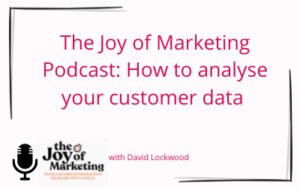Through our discussions with multi-channel retailers, we keep hearing the same buzzword for 2022 – customer loyalty. This could mean anything from a traditional monetary reward scheme to a loyalty programme geared towards engagement and brand awareness. Let’s take a closer look at the different strategies that brands will be considering over the coming months and beyond.
Points-based programmes
Favoured among several of the multi-channel retailers we speak to, this is perhaps one of the more traditional forms of loyalty compensation. One brand, which implemented its points-based programme around a year ago, says it’s a useful platform for “almost all interactions with those in the scheme” and is “really changing the conversation with existing customers”. The scheme offers customers a 10% discount in return for each purchase, with points expiring after six months. This creates both an incentive and a sense of urgency to use up any points collected. As a result, this retailer has seen an exponential increase in the number of customers opening accounts.
Tiered loyalty programmes
This is a type of membership programme in which customers are incentivised to become a more esteemed (and therefore privileged) member over time. Unlike quick-fire reward schemes, tiered programmes group their members according to certain attributes, for example how often they purchase. Each tier – for instance bronze, silver, or gold – offers a different benefit, such as lifetime free delivery or a percentage-based discount. With the rewards increasing in value as a customer reaches the next level, this type of scheme is designed to build loyalty over time and is well suited to customers who make repeat and/or frequent purchases.
Access models
Popular among global ecommerce platforms and supermarkets, this type of subscription-based shopping has become a mainstay for many retailers. For one brand, offering unlimited delivery in return for a one-off annual fee works well as a new route to loyalty. It “drives up retention and average order frequency”. For brands who report a slight decline in average order value among subscribers, they more than make up for this in order frequency – as many as two to three more orders per season – as customers make the most of their paid subscription period. Meanwhile, the relatively low cost of delivery also drives up the ROI. This type of subscription programme can either be accessible to all, or targeted to specific segments, such as customers with four or fewer orders within the last 12 months.
Customer advocacy programmes
Rather than incentivising any kind of purchase, this customer-centric model focuses on engagement through a variety of giveaways, challenges, activities, downloads, competitions etc. As we describe in a recent article, customer advocacy platforms are helping retailers to build a community of brand ambassadors. There is a huge opportunity here, with over half (52%) of consumers saying they could be encouraged to join a brand community given the right incentives. Meanwhile, almost two-fifths of marketers (38%) believe community members will speak positively about their brand, and a similar proportion (37%) believe these advocates would actively defend the brand when its reputation is under attack.
Perks programmes
Best suited to brands whose customers generally have a high average order value but low purchase frequency, this type of scheme offers members a selection of perks to choose from, or even a surprise gift, on a regular basis (e.g. monthly). This sense of exclusivity not only helps to increase adoption rate but encourages more frequent purchases among existing customers.
Hybrid programmes
As the name suggests, this strategy combines elements of various types of loyalty scheme and can include both online and offline channels, which make it a good fit for many multi-channel retailers.
There are many types of loyalty scheme out there, and many benefits, such as better measurement of engagement and higher brand advocacy. But the one thing that multi-channel retailers need to keep front of mind is: regardless of strategy, they need to make sure customers have easy access at all times. Whether they’re using a loyalty card in store, racking up points online, joining the conversation on social media, or downloading the latest recipe – ease of participation will drive customer loyalty in 2022.




